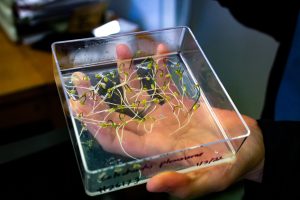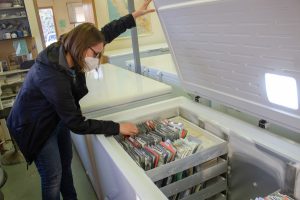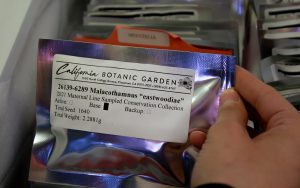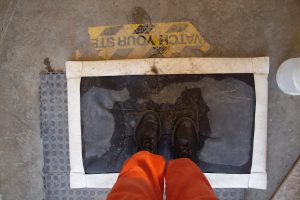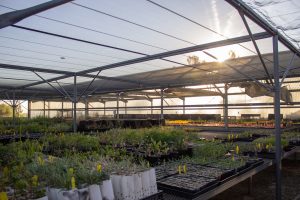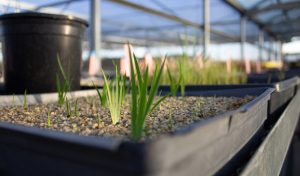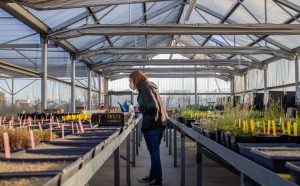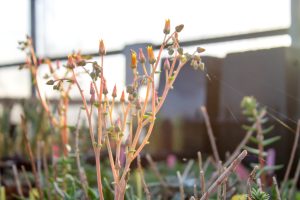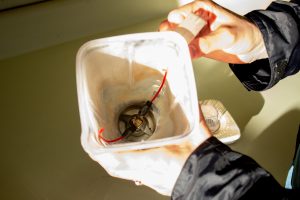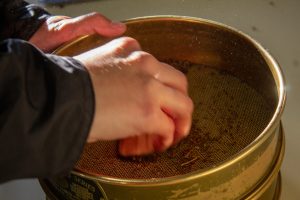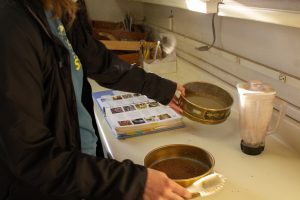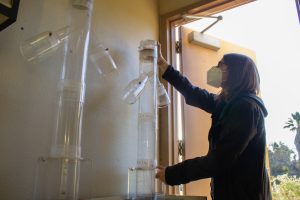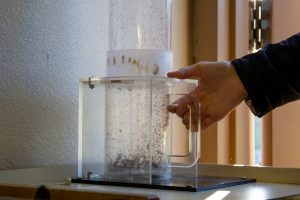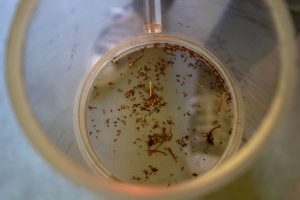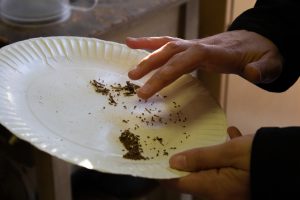- Slug: BC-CNS Seed Banks, 1,370 words.
- 17 photos and captions below.
By Lauren Lively
Cronkite News
CLAREMONT, Calif. – With a changing climate causing extreme weather conditions – such as California’s frequent wildfires and Arizona’s unrelenting drought – certain species that have been on the extinction list are being given a second chance through seed banks.
More than 1,000 seed banks are positioned across the globe, 20 of them in the United States, working to preserve frail ecosystems that are becoming less diverse as the planet warms. While certain banks only specialize in their native species, some banks store seeds from all over the world.
The bank at the California Botanic Garden in Claremont, which is preserving the genes of more than 6,000 species of seeds, also hosts other living organisms and takes part in broader conservation efforts, such as vegetation mapping and monitoring rare plants.
The work matters to the director of conservation programs at California Botanic Garden, Naomi Fraga, a botanist who specializes in plant conservation and floristics.
“Thinking about the extinction crisis and global change, there is the potential that we can lose many plant populations in the near future,” Fraga said. “And in fact we know we have populations in here that are actually extinct in the wild. Not whole species, but populations that no longer exist. And so those materials represent something that’s absolutely irreplaceable.”
Seeds are stored as a backup policy so that multiple varieties within a species are available somewhere in the world and can be grown or reintroduced into the wild at any point.
“Each seed represents a distinct genetic individual,” Fraga said. “And they’re generally small, so you can fit billions of genetically distinct individuals into a relatively small space and store tremendous amounts of genetic diversity.”
Seed-banking has been around for a century, viewed in an agricultural context with respect to food security, Fraga said.
“Now in agriculture, they’re not just focusing on the specific kinds of cultivars that are grown to produce food, but they’re also seed-banking crop wild relatives,” she said. “For instance, the banana is a good example of a crop that is heading towards extinction, because of a fungal pathogen.”
When a fungal disease infected the beloved Gros Michel banana and almost wiped out the entire species in the 1950s, the industry switched to another banana species, the Cavendish. Because bananas are grown from propagation and are genetic clones, there is a worry that Cavendish bananas will suffer a similar fate as Gros Michel.
“If we’re not backing up the world’s diversity of bananas, there will be no bananas to eat in the future,” Fraga said. “So we can’t just focus on the food that we consume now. We have to think about their wild relatives because that’s the source of future genetic diversity that people will need to pull from in order for us to do crop improvement.”
Even though backing up rare plants is important, the goal among seed banks is gathering and preserving as much genetic diversity as possible. And maybe even one day, entire ecosystems.
Because banking seeds for biodiversity has only been practiced within the past 100 years, how long seeds can be stored isn’t fully understood. However, scientists do have an understanding on why seeds respond to different types of storage, and they’re making more discoveries every day.
Cheryl Birker is the seed conservation program manager at the California Botanic Garden, recounted one accidental discovery.
When putting several varieties of seeds through cold stratification – an operation to trick seeds into germinating – the refrigerator malfunctioned and the shelves tumbled down, which mixed the seeds together.
Although the seeds weren’t germinating well before the accident, the samples started to grow. Botanists discovered that this variety of species prefer having a physical disturbance.
“We’ll do germination tests to try to pick up on if any of our (banked) species are dying,” Birker said, “and then we would make plans either to recollect, we could plant them in the nursery and make a second-generation seed collection or come up with other means if we’re really finding this species does not seem to live in storage at all. We’d have to come up with some other measure, like maybe having a living collection in the garden.”
Sometimes, scientists get lucky and find well-preserved samples in the wild. In 2012, scientists were able to bring back Silene stenophylla because ancient Siberian squirrels had stored some berries of the flowering plant 32,000 years ago. Because examples like this exist in the wild, scientists are optimistic that seed banks will be a barrier that secures biodiversity and helps create food security.
To ensure biodiversity is never lost, the California Botanic Garden sends collections of seeds to the National Laboratory for Genetic Resources Preservation in Fort Collins, Colorado. Although seed banks try to keep native seeds stored locally, the botanical garden shares their collections to preserve seed samples in case fires, floods or other disasters strike.
The garden has partnered with not-for-profit group California Plant Rescue and other organizations to collaborate on conservation efforts, innovations and sample collecting.
Botanists go to great lengths to gather seeds in the field, which can be treacherous. Areas are often remote with no trails or roads, and unstable weather can make conditions dangerous. There’s no guarantee that the collection will be successful either.
Fraga said it can take multiple years of collection efforts to extract certain seeds.
“Rare plants are rare for a reason,” she said. “They might have reproductive issues, so we might only get like 100 seeds one year. So that means we need to try again in other years to try and get enough seed where we have a sufficient collection that we feel is representative of the population.”
Collectors don’t want to disrupt the environment or do more harm than good. That’s why guidelines are in place to make sure that seed extraction is efficient and sustainable.
“We have extensive protocols to optimize collecting the genetic diversity present at the site,” Fraga said. “We’re only collecting a sample of plants, so we can’t collect seeds from every single individual. And we only collect less than 10% of the total seed production because we don’t want to collect too much and harm the natural population.”
Land development for housing and commercial interests also plays a role in the loss of biodiversity in natural ecosystems, which is why California has many restrictions to help species survive. But loopholes in those protections have put further pressure on already fragile populations.
Birker recounted the sad truth behind Linanthus maculatus, a rare flowering herb found about a decade ago in Ocotillo, California, near the border with Mexico.
“They found a population in an area that was slated for remote development,” she said, “but because it was a plant that had not been described yet and not listed on any rare plant list, they did not have to stop their work. And so they went ahead and bulldozed and put up these gigantic wind turbines, and unfortunately, that project was not very successful.”
The wind farm has a troubled history, including several turbine collapses – most recently in September, as reported by local residents and news outlets.
Although the California Botanic Garden banked a few samples of Linanthus maculatus, it’s a good example of how easy it is to lose a wild plant population.
“We never know when future advances might come,” Fraga said, “and how we might be able to learn to better restore populations. When you have nothing, you have nothing. But to have the seeds and seed banks, it’s some sort of insurance policy that those genetic individuals are represented somewhere, and can be potentially grown and introduced at some point.”
Seed banks around the world, which share information with one another, are acting to foster biodiversity in natural ecosystems. To entice more help from the public, some seed banks have opportunities to sponsor collections through donations.
Connecting with local seed banks is a great resource for anyone wanting to help preserve biological diversity.
“It just adds to sort of the data gathering about life and it contributes to our understanding of biodiversity,” Fraga said. “We’re hedging our bets, thinking, what if all these populations go extinct?
“To lose it to extinction is to lose it forever.”
For more stories from Cronkite News, visit cronkitenews.azpbs.org.
^__=
